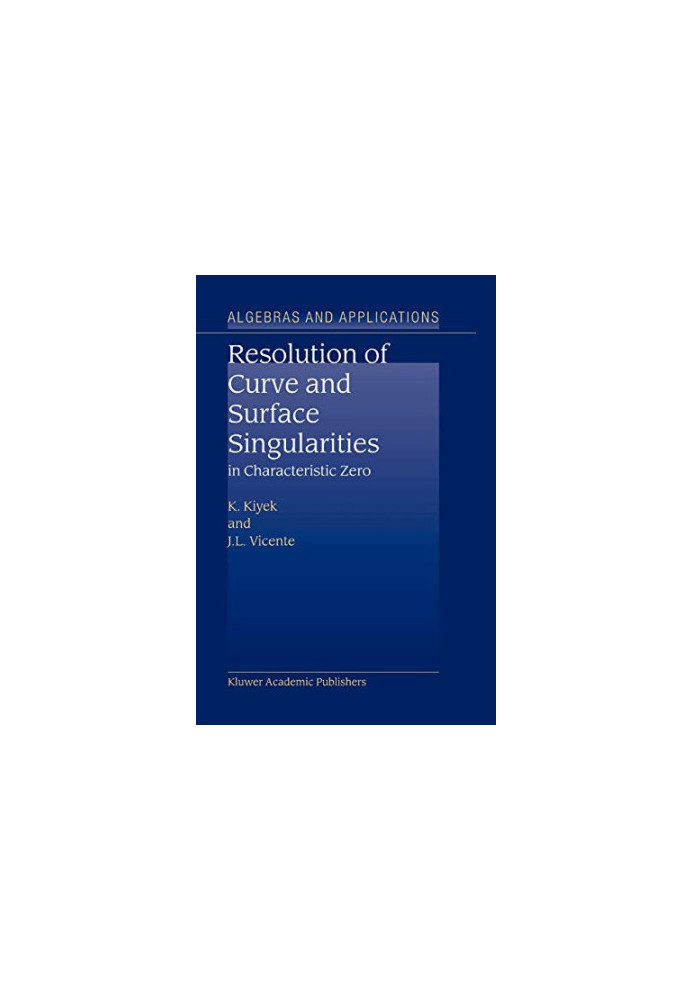Resolution of Curve and Surface Singularities in Characteristic Zero (Algebra and Applications, 4)
 Моментальное скачивание
Моментальное скачивание
после оплаты (24/7)
 Широкий выбор форматов
Широкий выбор форматов
(для всех устройств)
 Полная версия книги
Полная версия книги
(в т.ч. для Apple и Android)
The Curves The Point of View of Max Noether Probably the oldest references to the problem of resolution of singularities are found in Max Noether's works on plane curves [cf. [148], [149]]. And probably the origin of the problem was to have a formula to compute the genus of a plane curve. The genus is the most useful birational invariant of a curve in classical projective geometry. It was long known that, for a plane curve of degree n having l m ordinary singular points with respective multiplicities ri, i E {1, . . . , m}, the genus p of the curve is given by the formula = (n - l)(n - 2) _ ~ "r. (r. _ 1) P 2 2 L. . ,. •• . Of course, the problem now arises: how to compute the genus of a plane curve having some non-ordinary singularities. This leads to the natural question: can we birationally transform any (singular) plane curve into another one having only ordinary singularities? The answer is positive. Let us give a flavor (without proofs) 2 on how Noether did it • To solve the problem, it is enough to consider a special kind of Cremona trans formations, namely quadratic transformations of the projective plane. Let ~ be a linear system of conics with three non-collinear base points r = {Ao, AI, A }, 2 and take a projective frame of the type {Ao, AI, A ; U}.
LF/753982/R
Характеристики
- ФИО Автора
- J.L.
K.
Kiyek
Vicente - Язык
- Английский
- Серия
- Algebras and Applications 4
- ISBN
- 9789048165735
- Дата выхода
- 2010


![[Day by Day Armageddon 03]...](https://lionbook.net/1095081-thickbox_default/-day-by-day-armageddon-03-shattered-hourglass.jpg)

![[Breaking Free Duet 01] •...](https://lionbook.net/1179202-thickbox_default/-breaking-free-duet-01-breaking-free.jpg)


![[A Kingpin Love Affair 01]...](https://lionbook.net/1428612-thickbox_default/-a-kingpin-love-affair-01-indebted.jpg)



![[Wrecked 03] • Accept Me](https://lionbook.net/1566237-thickbox_default/-wrecked-03-accept-me.jpg)


![[The Ready 03] • Ready for You](https://lionbook.net/1638834-thickbox_default/-the-ready-03-ready-for-you.jpg)
![[Alliance Vampires 02] •...](https://lionbook.net/1658269-thickbox_default/-alliance-vampires-02-darkness-falls.jpg)
![[The Ready 1.50] • Ready to...](https://lionbook.net/1689330-thickbox_default/-the-ready-150-ready-to-wed.jpg)










